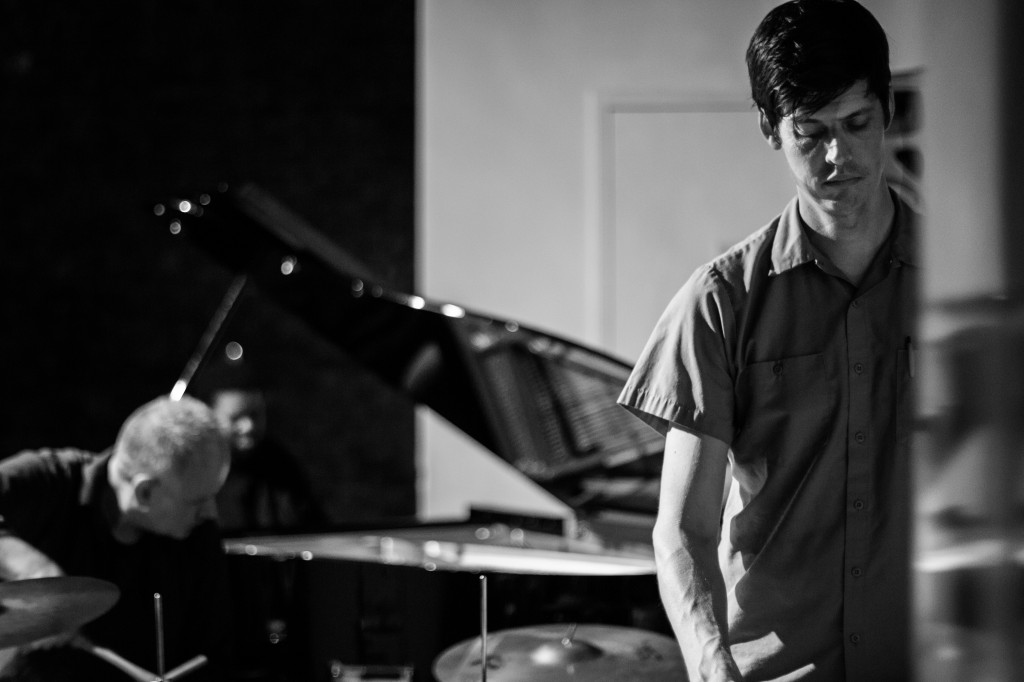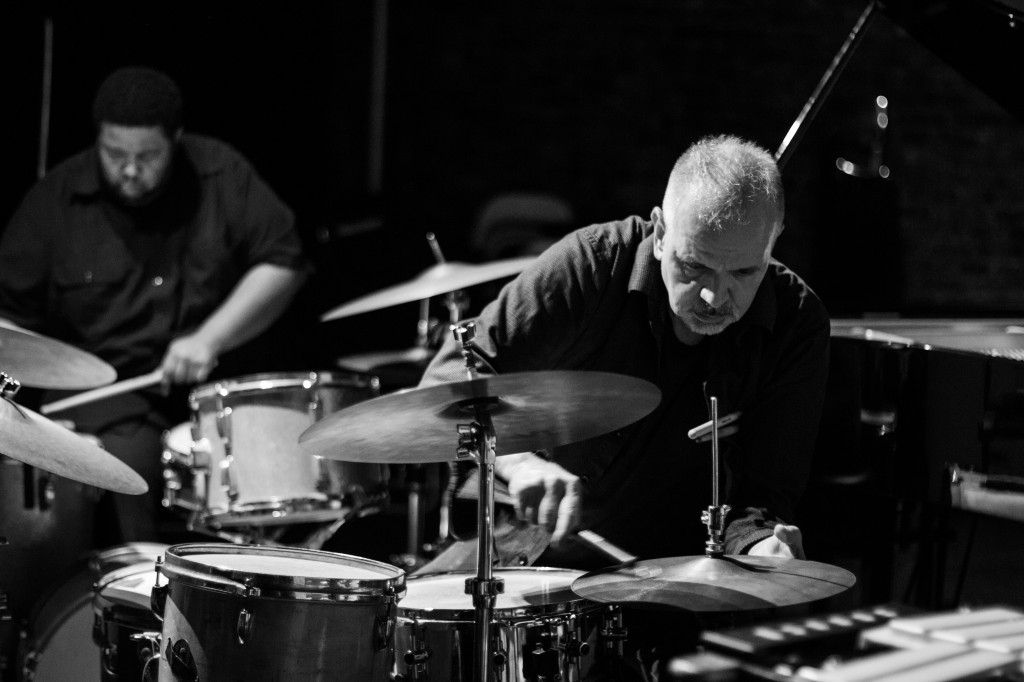Drummer Ches Smith took over the Stone for a week to showcase his work with a range of prominent musicians. A typical residency at the Stone is a week long event and every night tends to be unlike the other. Ches brought such heavy weights as Tim Berne, Mary Halvorson, Craig Taborn, Jonathan Finlayson, Randy Peterson and Mark Ribbot to join him on stage, to name just a few. 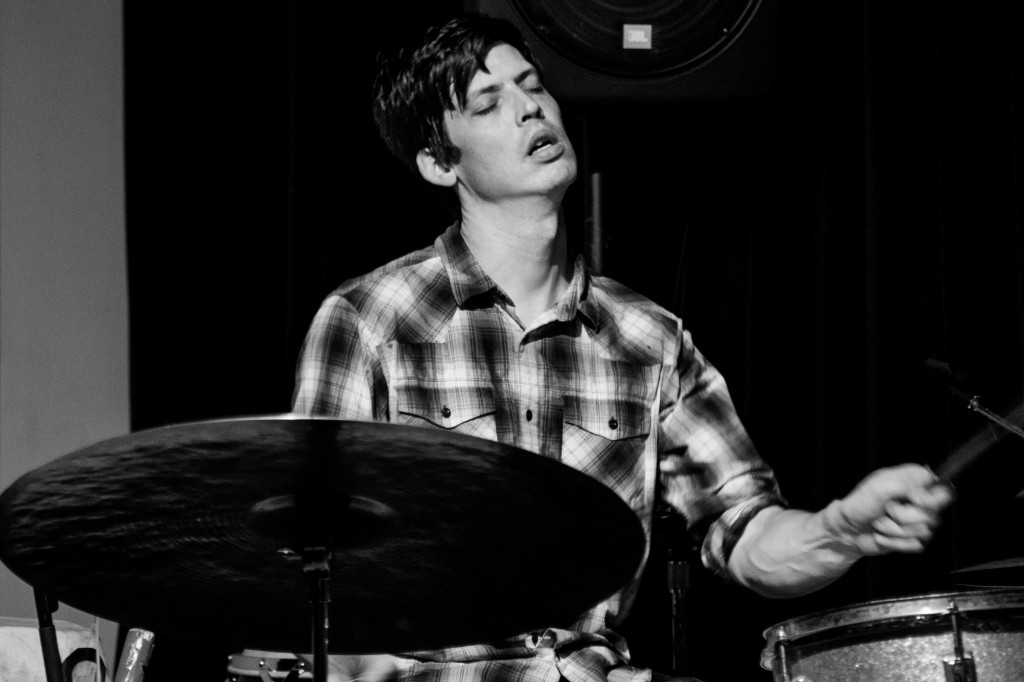
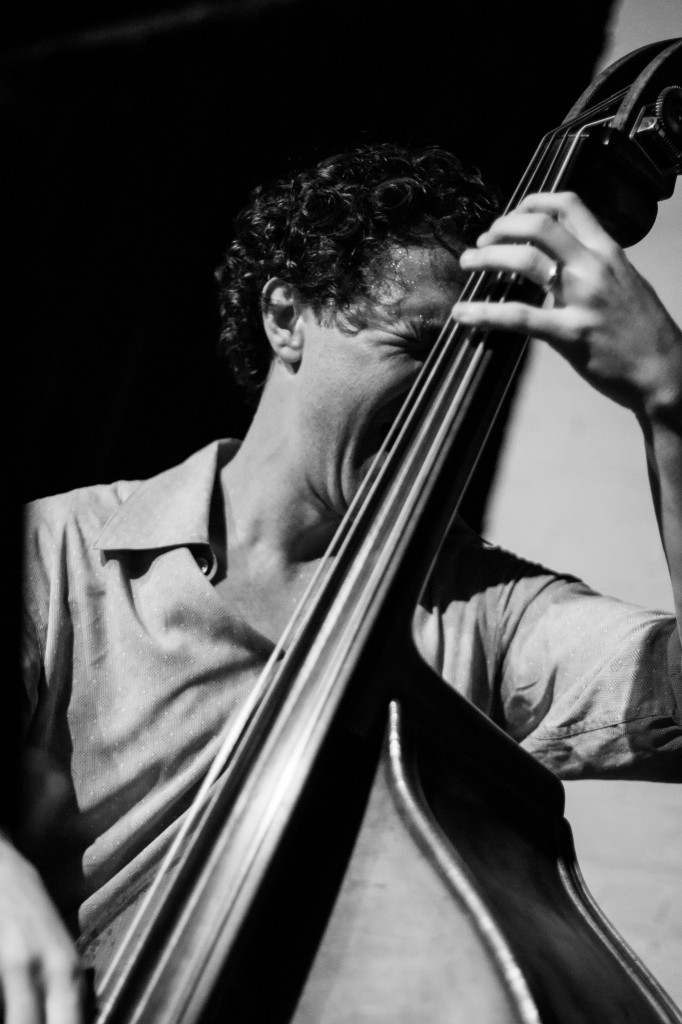
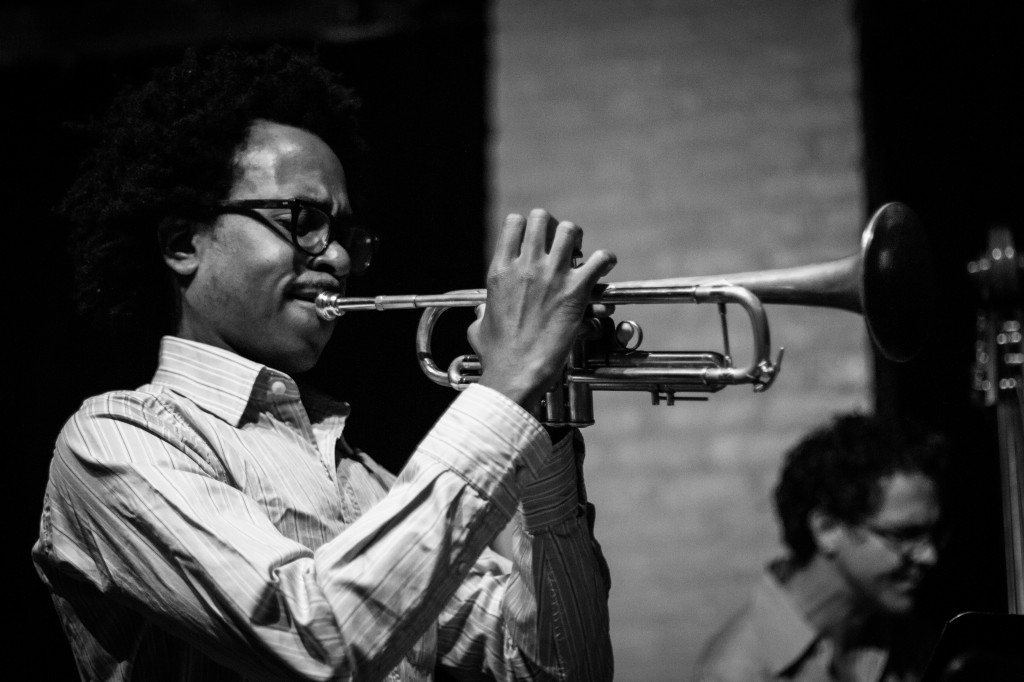
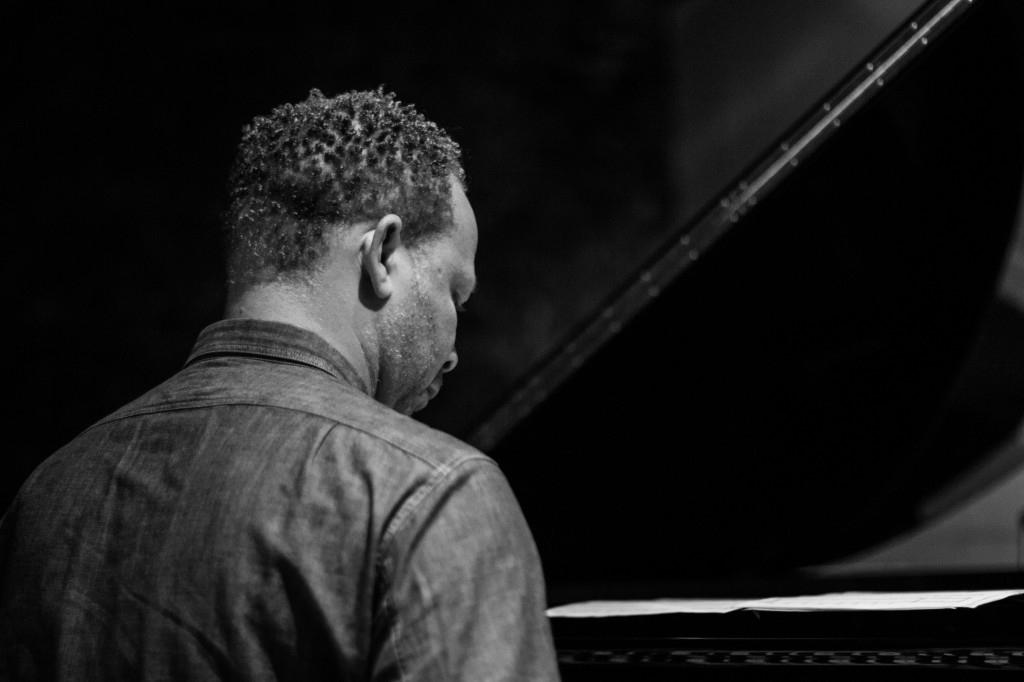 The two sets that I got to see were drastically different: a quarter with Jonathan Finlayson, Craig Taborn, Stephan Crump and Ches Smith was nothing like his drum trio with Randy Peterson and Tyshawn Sorey. The latter was an intense experience and the audience was almost in a trancelike state, mesmerized by the three drummers engaging in an hour long improvised musical conversation.
The two sets that I got to see were drastically different: a quarter with Jonathan Finlayson, Craig Taborn, Stephan Crump and Ches Smith was nothing like his drum trio with Randy Peterson and Tyshawn Sorey. The latter was an intense experience and the audience was almost in a trancelike state, mesmerized by the three drummers engaging in an hour long improvised musical conversation.
We caught up with Ches during one of the nights to talk about music, creativity and more.
Flowers In A Gun: When did you start playing? And why drums?
Ches Smith: I got into drums before I got into music in a way. It was around the house because my older brother played a drum set. So I was just copying him and he would show me stuff, and we would go back and forth and eventually played together.
FIG: But you studied philosophy in college, right?
CS: Yes, I went to school at the University of Oregon. I studied philosophy there but I was also playing jazz at the same time, but I wasn’t a music major or anything like that.
FIG: How did you make the transition?
CS: Well, actually I went to grad school for music. I was playing with a college ensemble in Oakland, California and then they had me try out for the school and helped me got me scholarship. So it kind of all happened around that time but I was already playing drums at that point. I was already playing a lot and was making a living doing it by the time I went to grad school.
FIG: You moved from the West Coast to NYC about 6 years ago. What are the main differences for you between the two music scenes?
CS: This kind of music, whatever you might call it, for the music I play there is definitely much more of an audience and a community here. I only lived in LA for a few years and I was on tour most of the time, but in the Bay Area it’s definitely much harder to find an audience. There are fewer places to play, fewer people come to the shows.
FIG: Who are your main musical influences? Who inspires you?
CS: There are tons of course. I’ve been listening to Thelonious Monk since I was seventeen or maybe younger. I just listened to him the other day and he completely blew me away again. That’s one person I keep coming back to. Particularly what he did with Art Blakey and Max Roach. So these are the early jazz influences, people that I listened to a lot and transcribed a lot of their music.
FIG: And what’s been on your current musical rotation?
CS: A lot of Haitian drum music, some stuff that isn’t really available yet. There is an archive of this great drummer called Frisner Augustin, who is teacher of mine, he passed away a few years ago. And there are a lot of recordings that were made of him playing at ceremonies and stuff like that. I have access to a lot of it thanks to some good friends. Been listening to a lot of Steve Lehmen, he is an alto sax player. Really, really interesting composer.
FIG: Do you still play at the Haitian Vodou ceremonies in NYC?
CS: Yes, it’s still happening. I was asked to do one the other night but I was just too busy. I am doing this thing at the Kitchen up in Chelsea during the daytime, it’s an art installation and I play percussions. And I was getting ready for the residency at the Stone so I had to pass on the ceremony past Sunday.
FIG: How often do you get to participate?
CS: Not too often, maybe once every two months at the most.
FIG: What is the experience like for you?
CS: It’s intense. It’s probably one of my favorite things to do. I feel very lucky that I get to take part in it, just play there. There is a religious part to it, yet it’s fairly informal and the energy is almost as if it was a punk show. Just energy wise it’s amazing, everyone is very involved.
FIG: You play a lot of different music and you work both as a leader and as a sideman. Is there a big difference for you in terms of how you approach the music depending on the role? Do you have a preference?
CS: Unfortunately, yes. Just because I am more relaxed as a side person. It’s easier to just focus on playing. And I think that I am getting better at the leader thing so it’s getting to be where I can just play. But if you write the music you have to get together with the players. Some of that process for me inevitably bleeds into a gig. I am always happy with what people play, however they interpret the music. And I think it’s been very useful to have the music I write played regularly. So I am leaning more towards the leader side. But it’s all great. I am going on tour with Mary Halvorston and her quintet at the end of the month. I am really looking forward to that, it’s going to be a lot of fun and I will just get to play.
FIG: How did start playing with Mary Halvorston and Mark Ribbot?
CS: Mary and I have known each other for a while and we became really good friends. When she started her trio back in 2007, she just asked me to do it. That’s a band where she writes all of the music and I have gotten to learn how she thinks about music and I think vice versa because she often times plays in my band. And Mark, even though he did a few gigs of my music, I feel more that I am the drummer of his band, the Ceramic Dog.
FIG: What is your creative process like when you write the music?
CS: Well, usually I just book the gig first and then write the music. It almost gives me the reason to write the music. Often times I know who I want to work with and I try to write something that they can play. And some of it is just very mundane things. I go through periods when I write every day. And then some of it gives a spark and leads to something else.
FIG: Can you talk a little bit about your residency at the Stone?
CS: Zorn asked me to do a week here and I said of course. I knew I wanted to do something with These Arches, I knew I wanted to do a solo thing – that’s like a challenge to come up with a new set of music for that. I started playing with Craig Taborn and I knew I wanted to do something with him. There is a thing with the Haitian drummers that we had Tuesday night. That was a lot harder to get together because one of the drummers lives in California. So it was hard but I did it and it all worked out. And I am really happy it happened. And the other sets it’s just really the people that I wanted to play with a lot. Tysshow and Randy are both amazing drummers and we are doing a drum trio together. We have never played the three of us together before. Half of the music this week is new material and of course there is a lot of improvisation and so on.
FIG: And what are some of the plans for the future?
CS: At some point in the future I am recording a trio with Craig Taborn and Mat Maneri. Working on the new thing Bongs for Drums, my solo thing. I am doing a European Tour with it next year. But it takes a lot of time to get it all together. And the tour with Mary at the end of the month.
Anna Yatskevich is Flowers In A Gun’s glamorous jazz & beyond critic! Catch more reviews from her here and follow her on Twitter @jazzaddikt.

